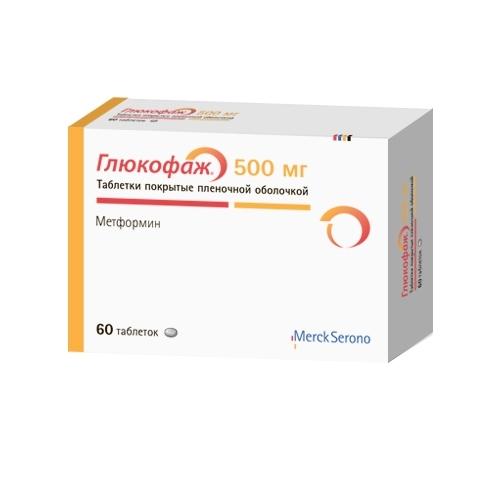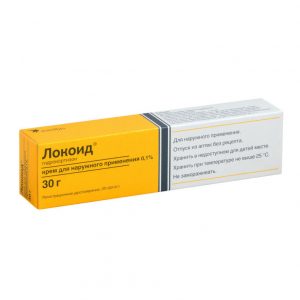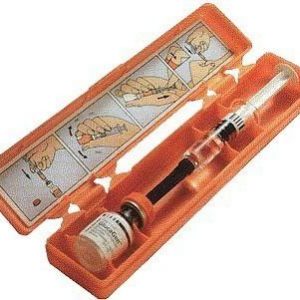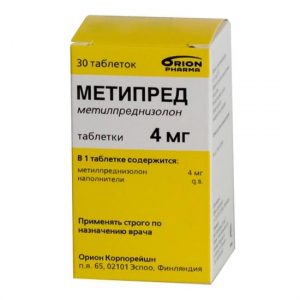Description
Release form
Film-coated tablets.
Packing
60 pcs. 0.5 g each.
Pharmacological action
Oral hypoglycemic preparation from the biguanide group.
Glucophage reduces hyperglycemia without causing hypoglycemia. Unlike sulfonylurea derivatives, it does not stimulate insulin secretion and does not have a hypoglycemic effect in healthy individuals.
Increases peripheral receptor sensitivity to insulin and glucose utilization by cells. Reduces liver glucose production by inhibiting gluconeogenesis and glycogenolysis. Delays intestinal absorption of glucose.
Metformin stimulates glycogen synthesis by acting on glycogen synthetase. Increases transport capacity of all types of membrane glucose transporters.
In addition, it has a beneficial effect on lipid metabolism: it lowers total cholesterol, LDL and TG.
While taking metformin, the patient s body weight either remains stable or decreases moderately.
Indications
Type 2 diabetes mellitus, especially in patients with obesity, with ineffective diet therapy and physical activity:
in adults as monotherapy or in combination with other oral hypoglycemic agents, or with
insulin in children from 10 years of age as monotherapy or in combination with insulin.
Prevention of type 2 diabetes in patients with prediabetes with additional risk factors for developing type 2 diabetes, in which lifestyle changes did not allow adequate glycemic control to be achieved.
Contraindications
Diabetic ketoacidosis.
Diabetic precoma.
Diabetic coma.
Impaired renal function (CC <60 ml / min). Renal failure. Acute conditions at which there is a risk of impaired renal function: dehydration, (with diarrhea, vomiting), severe infectious diseases, conditions, shock. Clinical manifestations of acute and chronic diseases that can lead to the development of tissue hypoxia (including respiratory failure, heart failure, acute myocardial infarction). Extensive surgery and trauma (when insulin therapy is indicated). Hepatic failure. Impaired liver function. Chronic alcoholism, acute ethanol poisoning. Lactic acidosis (including history). A period of at least 48 hours before and within 48 hours after conducting radioisotope or x-ray studies with the introduction of an iodine-containing contrast medium. Following a low-calorie diet (<1000 kcal / day). Pregnancy. Hypersensitivity to the drug. Caution: the drug should be used in patients over the age of 60 who perform heavy physical work (which is associated with an increased risk of developing lactic acidosis) during breastfeeding. Special instructions Lactic acidosis Lactic acidosis is a rare but serious (high mortality rate without urgent treatment) complication that may occur due to cumulation of metformin. Cases of lactic acidosis when taking metformin occurred mainly in patients with diabetes mellitus with severe renal failure. Other related risk factors should be considered, such as decompensated diabetes mellitus, ketosis, prolonged fasting, alcoholism, liver failure and any condition associated with severe hypoxia. This can help reduce the incidence of lactic acidosis. The risk of lactic acidosis should be considered when nonspecific signs appear, such as muscle cramps accompanied by dyspeptic symptoms, abdominal pain and severe asthenia. Lactic acidosis is characterized by acidotic shortness of breath, abdominal pain and hypothermia followed by coma. Diagnostic laboratory parameters are a decrease in blood pH (less than 7.25), a lactate content in plasma of more than 5 mmol / l, an increased anion gap and a lactate / pyruvate ratio. If metabolic acidosis is suspected, it is necessary to stop taking the drug and consult a doctor immediately. Surgical operations Metformin should be discontinued 48 hours before elective surgery and can be continued no earlier than 48 hours after, provided that renal function was found to be normal during the examination. Kidney Function Since metformin is excreted by the kidneys, before starting treatment and regularly thereafter, it is necessary to determine QC: at least once a year in patients with normal renal function, and 2-4 times a year in elderly patients, as well as in patients with QC at the lower limit of normal. Special care should be taken in case of possible impaired renal function in elderly patients, while the use of antihypertensive drugs, diuretics or NSAIDs. Pediatric Use The diagnosis of type 2 diabetes mellitus should be confirmed before starting treatment with metformin. In clinical trials lasting 1 year, it was shown that metformin does not affect growth and puberty. However, due to the lack of long-term data, careful monitoring of the subsequent effect of metformin on these parameters in children, especially during puberty, is recommended. The most careful monitoring is necessary for children aged 10-12 years. Other Precautions Patients are advised to continue on a diet with an even carb intake throughout the day. Overweight patients are advised to continue to follow a low-calorie diet (but not less than 1000 kcal / day). It is recommended that routine laboratory tests be performed to monitor diabetes. Metformin does not cause hypoglycemia during monotherapy, but caution is advised when used in combination with insulin or other hypoglycemic agents (including sulfonylureas, repaglinide). Effect on the ability to drive vehicles and control mechanisms Monotherapy with glucophage does not cause hypoglycemia, therefore, does not affect the ability to drive vehicles and mechanisms. Nevertheless, patients should be cautioned about the risk of hypoglycemia when using metformin in combination with other hypoglycemic drugs (including sulfonylurea derivatives, insulin, repaglinide). Composition 1 tablet contains: Active ingredient: metformin hydrochloride – 500 mg. Excipients: povidone – 20 mg, magnesium stearate – 5.0 mg. Composition of the film coat: hypromellose – 4.0 mg. Dosage and administration of The drug is taken orally. Adults Monotherapy and combination therapy with other oral hypoglycemic agents The usual starting dose is 500 mg or 850 mg 2-3 times / day after or during meals. A further gradual increase in dose is possible depending on the concentration of glucose in the blood. The maintenance dose of the drug is usually 1500-2000 mg / day. To reduce side effects from the gastrointestinal tract, the daily dose should be divided into 2-3 doses. The maximum dose is 3000 g / day, divided into 3 doses. Slow dose increases may contribute to improved gastrointestinal tolerance. Patients receiving metformin in doses of 2-3 g / day can be transferred to the drug Glucofage 1000 mg. The maximum recommended dose is 3000 mg / day, divided into 3 doses. If you plan to switch from taking another hypoglycemic drug: you must stop taking another drug and start taking Glucophage in the dose indicated above. Monotherapy for prediabetes: The usual dose is 1000-1700 mg per day after or during meals, divided into 2 doses. It is recommended to regularly conduct glycemic control to assess the need for further use of the drug. Combination with insulin To achieve better blood glucose control, metformin and insulin can be used as a combination therapy. The usual initial dose of Glucophage is 500 mg or 850 mg 2-3 times / day, while the dose of insulin is selected based on the concentration of glucose in the blood. Children and adolescents In children aged 10 years and older: Glucophage can be used both as monotherapy and in combination with insulin. The usual starting dose is 500 mg or 850 mg 1 time / day after or during meals. After 10-15 days, the dose must be adjusted based on the concentration of blood glucose. The maximum daily dose is 2000 mg, divided into 2-3 doses. Elderly patients Due to a possible decrease in renal function, the dose of metformin must be selected under regular monitoring of renal function indicators (to determine the serum creatinine content at least 2-4 times a year). Gyukofazh should be taken daily, without a break. If treatment is discontinued, the patient should inform the doctor. Side effects Determination of the frequency of side effects: Very often (? 1/10). Often (? 1/100, <1/10). Infrequently (? 1/1000, <1/100). Rarely (? 1/10 000, <1/1000). Very rare (<1/10 000). Side effects are presented in decreasing order of importance. Metabolism: very rare – lactic acidosis with prolonged use may reduce the absorption of vitamin B12. Decreased vitamin B12 levels must be considered in patients with megaloblastic anemia. From the nervous system: often – a violation of taste. From the digestive system: very often – nausea, vomiting, diarrhea, abdominal pain, lack of appetite. Most often, these symptoms occur during the initial period of treatment and in most cases pass spontaneously. To prevent symptoms, it is recommended that you take metformin 2 or 3 times / day during or after meals. Slow dose increases can improve gastrointestinal tolerance. From the skin and subcutaneous tissues: very rarely – erythema, itching, rash. From the liver and biliary tract: very rarely – impaired liver function, hepatitis. After discontinuation of metformin, adverse reactions completely disappear. Published data, post-marketing data, as well as data from controlled clinical trials in a limited child population in the age group of 10 to 16 years, show that side effects in children are similar in nature and severity to those in adult patients. Drug interactions Contraindicated combinations Iodine-containing radiopaque agents: against the background of functional renal failure in patients with diabetes, a radiological study using iodine-containing radiopaque agents may cause the development of lactic acidosis. Treatment with Glucofage should be canceled depending on the function of the kidneys 48 hours before or during the X-ray examination using iodine-containing radiopaque agents and not be resumed earlier than 48 hours after, provided that the renal function was recognized as normal during the examination. Not recommended combinations Alcohol: in case of acute alcohol intoxication, the risk of lactic acidosis increases, especially in the case of: Undernutrition, following a low-calorie diet. Hepatic failure. Alcohol and medicines containing ethanol should be avoided while taking the drug. Combinations requiring caution The simultaneous administration of danazol is not recommended in order to avoid the hyperglycemic effect of the latter. If treatment with danazol is necessary and after stopping the latter, dose adjustment of the drug Glucofage is required under the control of the concentration of glucose in the blood. Chlorpromazine when taken in high doses (100 mg / day) increases the concentration of glucose in the blood, reducing the release of insulin. In the treatment of antipsychotics and after stopping the latter, dose adjustment is required under the control of blood glucose concentration. corticosteroids for systemic and topical use reduce glucose tolerance, increase the concentration of glucose in the blood, sometimes causing ketosis. In the treatment of corticosteroids and after stopping the intake of the latter, dose adjustment of the drug Glucofage is required under the control of the concentration of glucose in the blood. The simultaneous use of loop diuretics can lead to the development of lactic acidosis due to possible functional renal failure. Glucophage should not be prescribed if the CC is less than 60 ml / min. Injection beta2-adrenergic agonists increase the concentration of glucose in the blood due to the stimulation of 2 -adrenoreceptors. In this case, it is necessary to control the concentration of glucose in the blood. If necessary, insulin is recommended. With the simultaneous use of the above medicines, more frequent monitoring of blood glucose may be required, especially at the beginning of treatment. If necessary, the dose of metformin can be adjusted during treatment and after its termination. ACE inhibitors and other antihypertensive drugs can lower blood glucose. If necessary, the dose of metformin should be adjusted. With the simultaneous use of the drug Glucofage with sulfonylurea derivatives, insulin, acarbose, salicylates, hypoglycemia may develop. Nifedipine enhances absorption and Cmax of metformin. Cationic drugs (amiloride, digoxin, morphine, procainamide, quinidine, quinine, ranitidine, triamteren, trimethoprim and vancomycin), secreted in the renal tubules, compete with metformin for tubular transport systems and can lead to an increase in its Cmax. overdose Symptoms: no hypoglycemia was observed with the use of metformin at a dose of 85 (42.5 times the maximum daily dose), but the development of lactic acidosis was noted. Significant overdose or associated risk factors can lead to the development of lactic acidosis. Treatment: immediate withdrawal of the drug Glucophage, urgent hospitalization, determination of the concentration of lactate in the blood, if necessary, conduct symptomatic therapy. To remove lactate and metformin from the body, hemodialysis is most effective. Storage conditions Keep out of the reach and sight of children at temperatures not exceeding 25 ° C. Shelf life 5 years. Deystvuyushtee substance Metformin Pharmacy conditions Pharmacy conditions tablet dosage form of tablets Possible product names Glucofage 0,5 N60 TABLE S / FILM / SHELL Glucofage 500 mg Tab. p / pl / rev X60 (20tab. X3 blister. 123.14) (R) Glucophage 500mg No. 60 tab Glucophage 500mg. No. 60 TAB. / NIKOMED / Glucofage tab p / p / o 500mg N60




